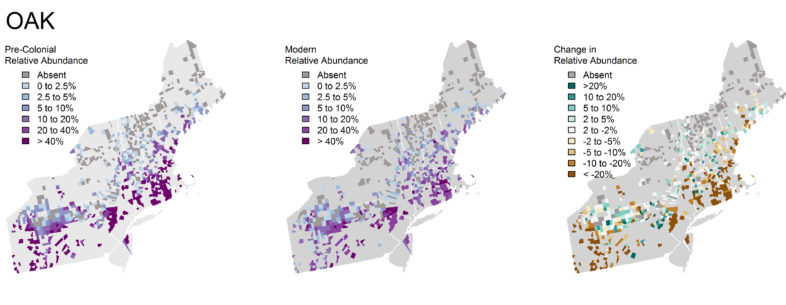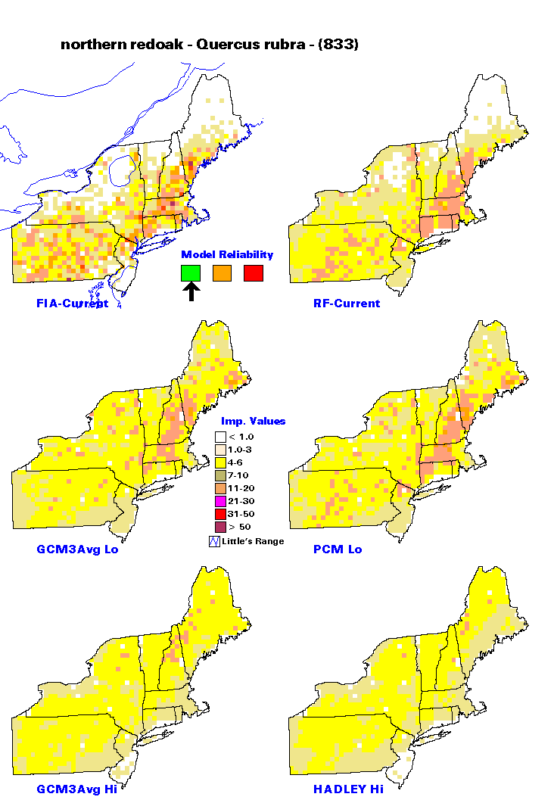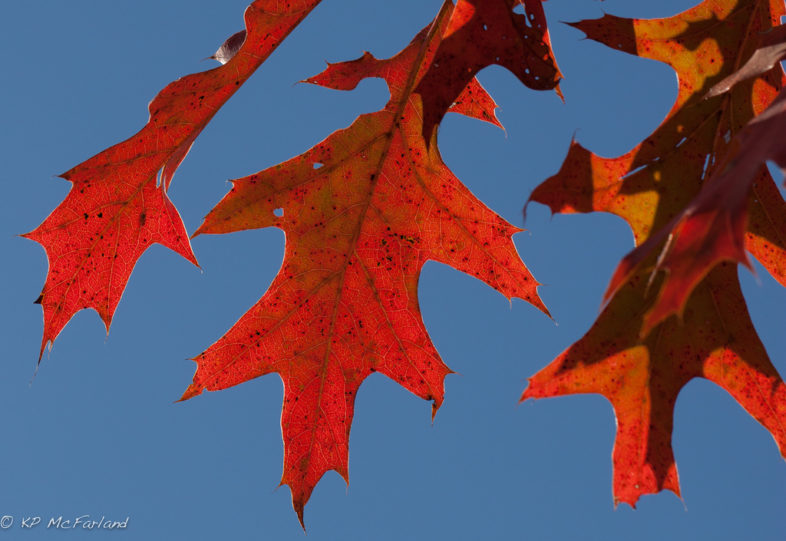If you’ve driven Interstate 91 through Vermont from the border of Massachusetts in the south to the international border in the north with an eye on the trees along the road, you likely noticed changes along the way. You might have noted just how predominant Northern Red Oak (Quercus rubra) is in the south and how it slowly disappears as you cruise northward, until it is completely missing when you reach the border.
In 2001 ecologist Brett Engstrom wrote about Red Oak distribution in the Upper Winooski River watershed in northeastern Vermont for the newsletter of a local naturalists club. I was fascinated by his observations. Here was a tree that was considered to be common in much of Vermont and both economically and ecologically important in some areas, yet we really didn’t have a good understanding of its biogeography throughout the state. Engstrom made careful note of where he found oaks scattered in the forest over several decades in his region. Here at the edge of their range he found them on rocky, south facing slopes and as high as 2,110 feet in elevation in one place.
Charlie Cogbill, a forest ecologist from the same region, has used survey witness trees from the time of first European settlement to understand what the forests of New England may have looked like. Red Oak was a very uncommon tree, it was found mostly in the lower portion of the Connecticut River valley, southernmost Vermont borderlands and the Champlain Valley.

Town-scale relative abundance of oak within 701 colonial townships. Pre-colonial (left); Modern taxa (center); change in abundance between the eras (right),
As Engstrom noted, perhaps oaks expanded after European settlement as they can grow well in abandoned fields and are dispersed widely by Blue Jays carrying and storing acorns. Red Oak may be poised to move northward again. Climate change forecasts for tree distribution suggest Red Oak will move northward and increase in abundance in Vermont.

Current and predicted Northern Red Oak distribution from the USDA Forest Service Climate Change Tree Atlas.
Engstrom concluded his article with a plea for more observations to capture a more detailed picture of oak distribution in the region. With the Vermont Atlas of Life, together, we’ve done just that. Already, naturalists like you have contributed over 1,254 Northern Red Oak records across the state now, but we need more help!
Keep Adding Your Observations
Your mission is to record as many observations of oak trees (any species in the wild!) throughout Vermont as possible in the Vermont Atlas of Life on iNaturalist. Most oaks are relatively easy to identify, and since oak retains its leaves much longer than most hardwoods, it can be done even in winter. What is the highest elevation you can find it in your town? How many woodlots have oak in your neighborhood? Let’s keep building a detailed oak distribution map of Vermont. Together, we can create a basemap of oak distribution for comparison now and into the future.
Help Verify Records
We also need help verifying observations that are already shared. There’s a great tool to help you quickly and efficiently identify observations in iNaturalist. Identify is a lot like our observations search page, but you can view and identify observations without leaving the page. Visit the identify tool, set it for Vermont and oak or a specific oak species, and go to work! There are keyboard shortcuts to help you go even faster too:
- arrow keys navigate between observations,
- “i” brings up the identification form,
- “c” brings up the comment form,
- “r” marks the observation as reviewed
- “z” marks it as captive / cultivated.
Once we get as many of these verified as research grade as possible, we’ll be sharing the dataset with Charlie Cogbill to help track the oak biome with ever more detail.


This is great! I’ll put the word out and ID some of the many Red Oaks I know about here in Central Vermont. There are some big, old ones near Kents Corner and others at the base of the cliffs east of Marshfield.
I’ve observed Q. rubra as far north as Lowell, VT. There are a couple younger specimens (50-60 years old) growing along RT 58 just west of the village. I’m sure there are others in the area. I’ve also observed many large, old specimens in the east-central Adirondacks, farther south than Lowell, but much higher in elevation and therefore much colder. However, red oak is quite abundant on a number of sites in the area near Keene, Lake Placid and Saranac Lake. This fall I discovered a multi-trunk red oak (likely coppiced during logging) growing a little north of Lake Placid in an area marked on the maps as absent, and it was far from the only one. Despite being colder, parts of the Adirondacks seem to have soils that Q. rubra does better on than on similar sites in Vermont.
Oak wilt in St Johnsbury is killing every single oak we have.